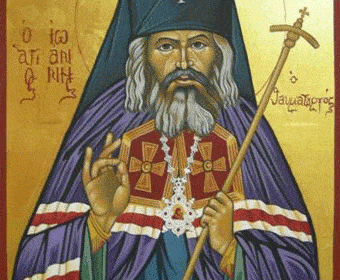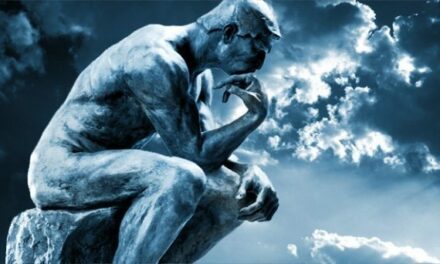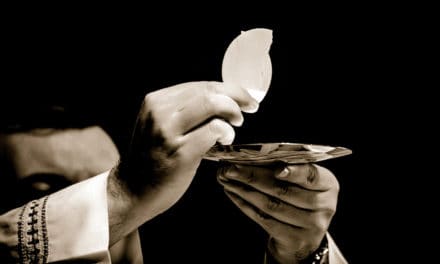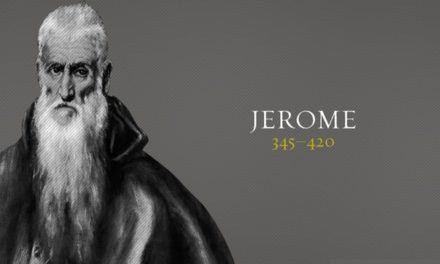This Episode of CS is titled, “Orthodoxy, with an Eastern Flavor.”
We need to begin this episode by defining the term “Orthodoxy.”
It comes from Greek. Orthos means “straight” & idiomatically means that which is right or true. Doxa is from the verb dokein = to think; doxa is one’s opinion or belief.
As it’s most often used, orthodoxy means adherence to accepted norms. In reference to Christianity, it means conforming to the creeds of the early Church; those statements of faith issued by the church councils we’ve looked at in recent podcasts and we have a series on in Season 2.
In opposition to orthodoxy is what’s called heterodoxy; other-teaching. Heterodoxy deviates from the Faith defined by the Creeds. Specific instances of heterodoxy, that is – deviant doctrines are called heresy; with those who hold them known as heretics. When heresy causes a group of people to remove themselves from the Communion of Saints so they can form their own distinct community, it’s called a Schism.
But there’s another, very different way the word Orthodox is used in Christianity. It’s the name of one of the 4 great branches of the Church; Roman Catholic, Protestant, & Eastern Orthodox. The fourth is that branch of the Faith we’ve been looking at for the last couple episodes – The Nestorian Church, AKA The Church of the East.
In the West, we’re familiar with Roman Catholicism & Protestantism. We’re less aware of Eastern Orthodoxy and most people haven’t even heard of the Nestorian Church. Ignorance of Eastern Orthodoxy is tragic considering the Byzantine Empire which was home to the Orthodox Church continued to embody the values & traditions of the Roman Empire until the mid-15th C, a full millennium after the Fall of Rome in AD 476.
It’ll be many episodes of CS before we get to the year 1054 when the Great Schism took place between the Eastern & Western churches. But I think it helpful to understand how Eastern Orthodoxy differs from Roman Catholicism so we can stay a little closer to the narrative timeline of how the Church developed in upcoming episodes.
One of the ways we can better understand the Eastern Orthodox Church is to quickly summarize the history of Roman Catholicism in Europe during the Middle Ages as a contrast.
In the West, the Church, led by the Pope with cardinals & bishops, oversaw the spiritual & religious aspects of European culture. The affiliation between church & state that began with Constantine the Great & continued for the next century & a half was at best a tense arrangement. Sometimes the Pope & Emperor were close; at other times they were at odds & competed for power. Overall, it was an uneasy marriage of the secular & religious. During the Middle Ages, the Church exerted tremendous influence in the secular sphere, & civil rulers either sought to ally themselves with the church, or to break the Church’s grip on power. Realizing how firm that grip was, some civil rulers even sought to infiltrate the ranks of the church to install their own bishops & popes. The Church played the same game & kept spies in many of Europe’s courts. These agents reported to Rome & sought to influence political decisions.
The situation was dramatically different in the East where the church & state worked in harmony. Though foreign to the Western Mind, & especially the Modern Western Mind which considers a great barrier between Church & State, in the ancient Byzantine Empire, Church & State were partners in governance. They weren’t equivalent, but they worked together to shape policies & provide leadership that allowed the Eastern Empire to not only resist the forces that saw the West collapse, but to maintain the Empire until the 15th C when it was finally over-run by the Ottoman Turks.
In our attempt to understand Eastern Orthodoxy, we’ll look to the description Marshall Shelly provides in his excellent book, Church History in Plain Language.
The prime starting point for understanding Orthodoxy isn’t to examine its basic doctrines but rather its use of holy images called icons. Icons are highly stylized portrayals of one or more saints, set against a golden background and a halo around the head. Icons are crucial in understanding Eastern Orthodoxy. Orthodox believers enter their church and go first to a wall covered with icons called the iconostasis. This wall separates the sanctuary from the nave. The worshipper kisses the icons before taking his/her place in the congregation. A visitor to an Orthodox home will find an icon in the east corner of the main room. If the guest is him/herself Orthodox, they’ll greet the icon by crossing themselves & bowing. Only then will they greet the host.
To the Orthodox, icons are much more than man-made images. They’re manifestations of a divine ideal. They’re considered a window into heaven. In the same way grace is thought to be imparted through the Roman Catholic Mass, grace is thought to flow from heaven to earth thru icons. Protestants can better understand the importance of icons to the Orthodox by considering how important The Bible is to them. As Scripture is the written revelation of God’s will & truth, so icons are considered as visual representations of truth that have as much if not more to impart by way of revelation to believers. In fact, icons aren’t painted, they are said to be “written,” conveying the idea that they fulfill the same role as Scripture. The Bible is the Scripture in words; icons are scripture in images.
As I said, an icon is a highly stylized portrayal of saints or Bible scenes on panels, usually made of wood, most often cypress which has been prepped with cloth & gesso. The background is gold leaf, depicting the glory of the divine realm the image is thought to come from, with bright tempura paint making the figures & decoration. When dry, the panel is covered in varnish. Some ancient icons are amazing pieces of art. Icon artists consider the writing of icons as a spiritual act & prepare by fasting & prayer, after having completed laborious technical training.
Strictly speaking, Eastern Orthodox theology says icons are not objects of devotion themselves. They’re thought to be windows into the spiritual realm by which the divine is able to infiltrate & effect the physical. Though that’s the official doctrinal position on icons, they are kissed & venerated at the beginning & at various points during a service. Icons aren’t worshipped, they’re venerated; meaning while they aren’t given the worship due God alone, they are esteemed as a medium by which grace is bestowed on worshippers. While this is the technical explanation for the use of icons, watching how worshipers use them and listening to how highly they’re regarded, I’m hard-pressed to see how in a practical sense, there’s any difference between veneration & worship. To many objective observers, the use of icons seems a clear violation of the Second Commandment prohibiting the use of images in the worship of God.
Scholars debate when Eastern Christians began to use icons. Some say their use began in the late 6th or 7th C. Before icons became popular, relics played an important part of church life. Body parts of saints as well as items connected to Biblical stories were thought to possess spiritual power.
Caution: I know opine à All of this was superstitious silliness, but it framed the thinking of many. Since there were only so many holy relics to go around and each church made claim to one to draw worshippers in, icons began to be used as surrogates for relics. If you can’t have a piece of the cross, maybe a golden painting of Mary holding the baby Jesus would do the trick. If you can’t have Stephen’s index finger, how about his icon? Miraculous stories hovering round relics & icons were legion, each claiming some special connection to God & saints. Relics were said to bring healing. Icons were said to weep tears or bleed. The fragrant scent of incense was said to attend many of the greatest icons. The tales go on & on.
The question in all these claims is; where do we find the use of such things in Scripture? By way of reminder, Evangelical Christians determine what defines Biblical as opposed to Eastern Orthodoxy by this set of questions –
1) Did Jesus teach or model in in the Gospels?
2) Did the Early Church practice it in the book of Acts?
3) Do the NT epistles comment on or regulate it as normative for faith & practice?
Using this 3-fold filter, the use of relics & icons isn’t orthodox.
The Eastern Orthodox church refers to itself as the Church of the 7 Councils. It claims a superior form of the Christian Faith because it draws its doctrine from what it says are the main Church Councils that defined normal Christian belief. The last Council, Nicaea II in AD 787, came about as a response to the Iconoclast Controversy which we’ll talk about later. The point here is that Nicaea II declared the veneration of icons to be good & proper. What we’re to glean from this is that claiming to be a church that adheres to the creeds of the 7 Councils doesn’t mean much if those councils were just gatherings of men. It isn’t their Creeds that are important & that define the Faith; It’s Scripture alone that has that role. Creedal statements are only so good in as much as they are proper interpretations of the Word of God. But they are not themselves, that Word.
Another important distinction between the Eastern & Western Church is how they view the object of salvation.
Western Christians tend to understand the relationship between God & man in legal terms. Man is obliged to meet the demands of a just God. Sin, sacrifice, & salvation are all aspects of divine justice. Salvation is cast primarily in terms of justification.
In Roman Catholicism, when a believer sins, a priest determines what payment or penance he owes to God. If he’s unable to provide enough penance for some especially heinous sin, then purgatory in the afterlife provides a place where his soul can be expiated.
In Protestantism, penance & purgatory are set aside for the Biblical doctrine of the substitutionary atonement of Christ whose work at the cross atones for all sin, for all time. Justification by grace through faith is a keystone of evangelical theology. But here still, the issue is legal & forensic.
This legal emphasis is continued in Roman Catholicism’s view of the papacy. According to Rome, Christ commissioned & authorized Peter & his successors, the popes. That legal authority is seen in the symbols of the papacy – a set of keys.
Eastern Orthodoxy presents a contrast to this legal emphasis in Roman Catholicism & Protestantism. The core of Orthodox theology is the incarnation of God & how it effects the restoration & re-creation of fallen man. In Orthodoxy, sin isn’t so much a violation of God’s law as it is a denigration of God’s image. Salvation is less an issue of making sinners just before a holy God as it is a restoration of God’s image in them.
In Western Christianity, Jesus is seen primarily as the substitutionary sacrifice Who atones for sin & reconciles sinners to God. There’s a great burden of guilt due to the penalty of sin God’s righteous justice must be paid for. His law has been broken; it must be set right. Jesus sets it right by the cross, His resurrection vindicating & validating His sacrifice as sufficient. This is why the crucifix is such a prominent feature in Roman Catholicism & the Cross is central to classic Protestant preaching.
In Eastern Christianity, Christ is God incarnate & on mission to restore the image of God in man. And when I say ‘image,’ think “icon”. This is not to say that in Orthodoxy there’s no mention of justification or that in Romanism there’s no suggestion of restoration. There is. It’s more about where the emphasis lies.
In Orthodoxy, the church is far less the formal institution that developed in the West. It’s conceived more as the mystical body of Christ continually renewed by the Holy Spirit. This seems a rather odd claim to Protestants who’ve visited an Eastern Orthodox church, which is filled with images & a formal liturgy that’s quite formal. Compared to the spare architecture & decoration of Protestant churches, Orthodoxy does appear formal, but that formalism doesn’t extend to the hierarchy of the church. There’s no pope in the Eastern Orthodox church. Each of the major branches of Orthodoxy has its own patriarch, but there’s no one over-arching head bishop who oversees the Orthodox Church, as the Pope rules in Rome. The Eastern Church sees itself as a community where men & women are restored to the likeness of God.
So, we might ask: When did this fundamental difference between doctrinal emphases begin? That’s difficult to say for certain because the theology grew through a slow, steady progression. But we could say the differences emerged when the Gospel arrived in Corinth, then Rome in the 1st Century. Corinth was Greek; Rome Latin. The Greeks were more philosophical by nature & the Gospel appealed to their ancient quest to perfect man. The Latin Romans were fascinated by all things legal. They were a race of lawyers. A brief look at the history of Rome’s rulers reveals the importance the law played. Whoever could manipulate the courts & Senate ruled.
A good way for us to get a handle on the difference between Eastern & Western Christianity as it exists today is this – many Western Christians look back at Constantine’s uniting Church & State as a negative development. At the time, it seemed a blessed relief to a church hammered by 2 centuries of persecution, but looking forward form that ancient place, knowing what’s coming, we lament the corruption that’s in store for the church. So historians of Western Christianity speak of the enslavement of the church by the state.
For Eastern Christians, Constantine is regarded as a hero & saint. Orthodoxy considers his reign as the climax of the Roman Empire. According to this view, Rome evolved into a religious monarchy with the emperor as the connecting link between God & the world. The civil authority of the State was the earthly reflection of divine law while the Church was the religious reflection of Heaven on Earth. In Orthodoxy, the emperor was the place where the civil & religious authorities united. While the church & state were different entities, they weren’t seen as separate spheres. They worked together to govern all of human society.
Constantine’s imprint on Eastern Orthodoxy is undeniable. He considered the empire the “bearer” or litter that carried the Church. As Emperor, his role was to lead both church & state. Recognizing the need to mark this new moment in history, Constantine moved his capital to what was called – “New Rome” or what the people called Constantine’s City – Constantinople. He built the splendid Church of the Holy Apostles to shift the center of Church life to the East. To indicate the importance of the Emperor as God’s agent, in the midst of the 12 symbolic tombs of the apostles in the Church of the Holy Apostles, Constantine built a 13th for himself, making it clear he considered himself foundational to the faith & an equal to the Apostles.
This helps us understand why Constantine was so zealous to find a solution to the trouble the heresy of Arianism caused. As Shelly says, Constantine was superstitiously anxious that God would hold him personally responsible for the divisions and quarrels among Christians. If Christianity lacked cohesion and unity, how could it be a proper religion for the empire? So Constantine and the emperors who followed him made every effort to secure agreement about the Christian faith. Constantine thus adopted the practice already in use by Christians to settle differences on a local basis. He called ALL the leaders of the church to meet & agree upon proper belief & practice. This policy became an integral part of the Eastern Christian tradition. From the first Ecumenical Council at Nicea in 325, to the 7th in 787, also held in Nicaea, Emperors called the councils & imperial power presided over them. That’s why to this day the Eastern Orthodox Church refers to itself as the “The Church of the Seven Councils.”
These councils produced the creeds which embody orthodoxy. That orthodoxy was then enforced in society by the civil authorities. Faith ceased to be a purely spiritual or church matter; it took on a political dimension.[1]
While the Byzantine Empire had several notable rulers, the most significant after Constantine was Justinian the Great who ruled from 527-65. Constantine maintained a distinction between being a Christian & the Emperor. Justinian merged the 2 to become a Christian emperor. And this reveals one of the fundamental differences between East & West.
In the East, the head of the State & the head of the Church were fused into 1 office.
In the West, while there were times when a pope wielded tremendous political power, it was in a covert manner. Civil rulers were also at times given great influence in church affairs but typically sought to use that influence behind the scenes. Church & state were kept in separate spheres in the West. In the East, they merged.
Justinian thought himself God’s agent & the executor of his will. The empire was God’s instrument in the world. It bent its knee to Jesus, then rose to enforce its vision & version of Jesus’ will on the Earth.
This union of church & state continued on in the years that followed. Even under Communism, the Russian Orthodox Church, a branch of Eastern Orthodoxy, continued to operate through State license.
It was under Justinian that the unique Byzantine merger of Roman law with Christian faith & Greek philosophy took place, all of it flavored by a dash of Orientalism. This is seen most clearly in Byzantine art. Whereas the West had gone in for the realism of the Greek Classical Age, the Byzantines submerged the physical world of human experience under the supernal & transcendent realm of the spiritual. Nothing revealed that more than the Church of Holy Wisdom, known today as the Hagia Sophia. Justinian’s church was a remodel of an earlier church constructed by Constantine. Justinian gave the order it was to be the grandest building on the face of the Earth. Constructed in record time, it was indeed an amazing feat. When it was consecrated in 538, Justinian exclaimed he’d outdone Solomon. The dome, the largest to date, was thought to hang by a golden chain from heaven. It was so immense & high above the ground some thought it was a piece of the sky. The mosaics that made up the floor of the church dazzled the eye.
Years later when emissaries from the king of Ukraine visited Constantinople on a quest to find a suitable new religion for the Ukrainians, they were overwhelmed by the Hagia Sophia. It may well have been their report back to their monarch that moved him to choose Christianity as the new state religion. The emissaries said when they stood in the Hagia Sophia, they didn’t know if they were in heaven or on earth.
It’s important to mention here the Byzantines rarely if ever identified themselves as such; they were Romans. Constantinople was New Rome but they were not part of a new Empire called Byzantine. That’s a label applied by much-later historians. They were Romans and part of the Roman Empire. The Western half of the Empire may have fallen to barbarian invaders, but the Empire lived on in the East & would do so for another thousand years.
[1] Shelley, B. L. (1995). Church history in plain language (Updated 2nd ed.) (141–145). Dallas, Tex.: Word Pub.





